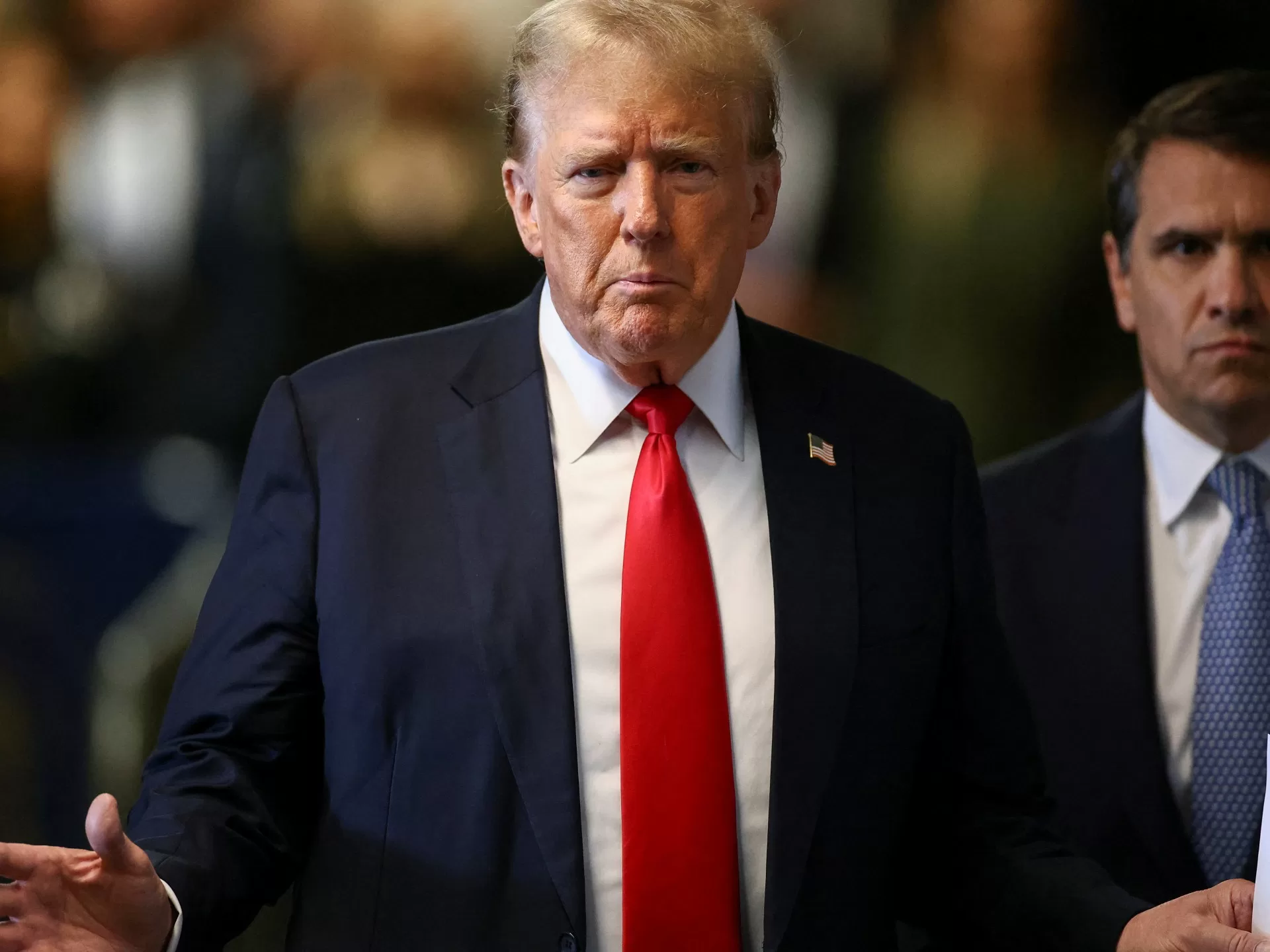Trump’s defence team on Tuesday morning made its last attempt to convince jurors that the ex-president did not cover up evidence of a hush-money payment made to adult film star Stormy Daniels ahead of the 2016 US elections.
“President Trump is innocent. He did not commit any crimes, and the district attorney has not met their burden of proof. Period,” Trump lawyer Todd Blanche said.
Prosecutors will seek to sum up their claim that Trump illegally falsified business documents to cover up the payment, which they say aimed to ensure Daniels would not go public with her claim she had a sexual encounter with the former president.
The closing arguments, which are set to last most of the day, come after nearly two dozen witnesses took the stand since late April in the historic case, the first criminal trial against a former president in US history.
Trump, who has pleaded not guilty and accused prosecutors of conducting a politically motivated “witch hunt” against him, remains the presumptive Republican nominee for president ahead of US elections in November.
If found guilty, he faces up to four years in prison, although imprisonment is unlikely for a first-time felon convicted of such a crime.
A conviction will not prevent Trump from trying to take back the White House from Democratic President Joe Biden in the November election, and it would not prevent him from taking office if he won.
But a guilty verdict could affect Trump’s chances in what is expected to be a tight race against Biden, with recent polls showing some Trump supporters would not cast a ballot for him if he is convicted of a felony crime.
Prosecutors have the burden of proving Trump is guilty “beyond a reasonable doubt”, the level of certainty required by US law. They will make their closing arguments after the defence, as is standard in New York criminal trials.
“This is a dark day in America. We have a rigged court case that should have never been brought,” Trump told reporters as he entered the courtroom on Tuesday. “We’ll see how it goes. This is a very dangerous day for America. It’s a very sad day.”
The case centres on a $130,000 payment Trump’s former lawyer, Michael Cohen, made to Daniels in the final days of the 2016 election.
Trump has denied Daniels’s claim that she had a sexual encounter with him in 2006, and his lawyer, during hours of questioning in the trial, accused her of making it up.
When Trump reimbursed Cohen, the payments were logged as being for legal services, which prosecutors say was designed to conceal the true purpose of the transaction with Daniels and to illegally interfere in the 2016 election, in which Trump defeated Democrat Hillary Clinton.
Trump’s lawyers contend they were legitimate payments for actual legal services, and they say that his celebrity status, particularly during the campaign, made him a target for extortion, points they are expected to revisit during their closing arguments on Tuesday.
The defence has also attempted throughout the trial to discredit the prosecution’s witnesses, including Cohen, who they have sought to portray as a serial liar who has an axe to grind with his former boss.
Cohen pleaded guilty in 2018 to federal charges related to the hush-money payments as well as for lying to the US Congress.
After the closing arguments are delivered on Tuesday, the judge will instruct the jury, likely on Wednesday, about the law governing the case and the factors it can take into account during deliberations.
There is no time limit on how long the jury takes to deliberate, and a verdict might not come by the end of the week.
To reach a verdict, all 12 jurors must agree with the decision for the judge to accept it. If the jury is unable to unanimously decide a verdict, it would deadlock, and the judge would declare a mistrial.
